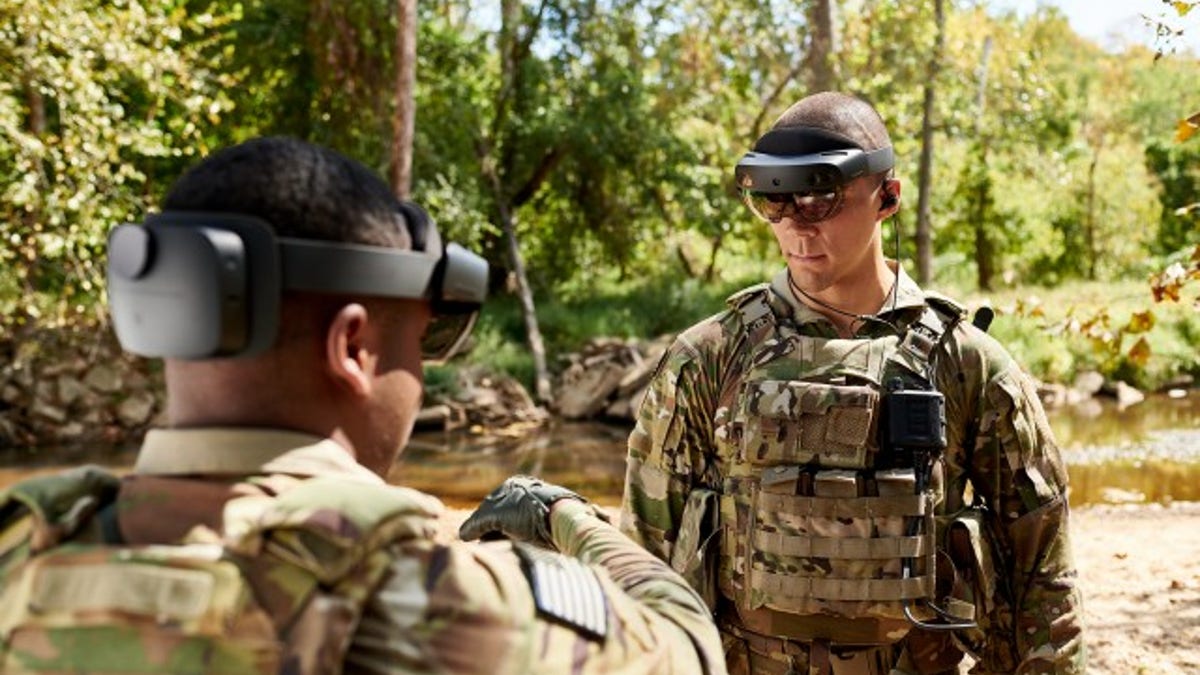Army scientists at Fort Detrick work around the clock to find medical solution to coronavirus
The same Army researchers found vaccines for anthrax, the plague and ebola; national security correspondent Jennifer Griffin reports.
Get all the latest news on coronavirus and more delivered daily to your inbox. Sign up here.
The U.S. Army has adapted emerging high-speed thermal imaging goggles to help dismounted infantry engage in close-in, crossfire combat to save lives in the service’s war on COVID-19.
The Army’s Soldier Lethality Cross Functional Team said prototype models of the Microsoft-engineered goggles are being used to quickly take the temperature of soldiers in training.
“The system is being employed today to rapidly assess the temperature of hundreds of Soldiers each day as they prepare for training on an installation that hosts thousands of Soldiers in dozens of courses, including basic training and Ranger School,” said the Army statement.
USNS COMFORT COMMANDER DESCRIBES HOW NAVY DOCTORS SAVE LIVES ABOARD THE HOSPITAL SHIP
Interestingly, the fast-developing Integrated Visual Augmentation System (IVAS), which includes imaging goggles and thermal weapons sights, is intended for a range of significant uses in warfare, providing tactical advantages to soldiers on the move in close-quarter combat.

IVAS goggles (U.S. Army)
“All your blue force trackers are woven into that augmented reality ... you operate with it, you train with it. It is a pretty amazing capability. There is a really unique way we are developing it,” Gen. John Murray, Commanding General of Army Futures Command, said in a recent interview with Warrior Maven.
The IVAS developmental trajectory involves three-week exercises with collaborative efforts between soldiers and engineers, mostly from Joint Base Lewis-McChord in Washington state. Murray described the process as “three-week sprints.”
PENTAGON TAKES AIM AT CORONAVIRUS WITH 8,000 VENTILATORS
Murray explained that the close-in nature of the training required to evolve the technology is not feasible to a large extent given the need for social distancing due to the coronavirus.
“That has been going on for a year and a half. It is very difficult when you have to be six feet apart. So that is slipping a little bit,” Murray explained.
The developmental effort has slipped a little, in part, due to supply-chain challenges as well, particularly those involving subcontractors and what Murray called “dual-use” suppliers. Smaller suppliers, such as firms with roughly 15 people or so, can be especially hard hit.
PENTAGON MODIFIES 1,500 CONTRACTS IN CORONAVIRUS, SMALL BUSINESS SUPPORT EFFORT
“If one of them gets infected the company effectively shuts down for 14 days. Industry is doing a phenomenal job keeping their eye on their subs,” Murray said in the interview with Warrior Maven.
Murray and Brig. Gen. David Hodne, Commandant of the Army’s Infantry School, said the delivery schedule for IVAS nonetheless remains on track to start fielding in 2021, despite some of the supply chain issues wrought by COVID-19.
The Army’s Program Executive Officer Soldier, which operates with the service’s Rapid Equipping Force, is also deploying thermal-imaging sensors in the war on COVID. The REF plans to deploy thermal sensors throughout a number of high-threat areas, including the Washington, D.C. area.
CLICK HERE FOR COMPLETE CORONAVIRUS COVERAGE
“Screening only takes a few seconds to measure temperature at a distance of 6-to-8 feet using a forward looking infrared sensor mounted on a tripod. If an elevated temperature is detected, individuals receive a secondary screening with a non-contact forehead thermometer. If a secondary screening confirms an elevated temperature, the individual will be encouraged to seek further screening with a medical provider,” the Army report states.









































